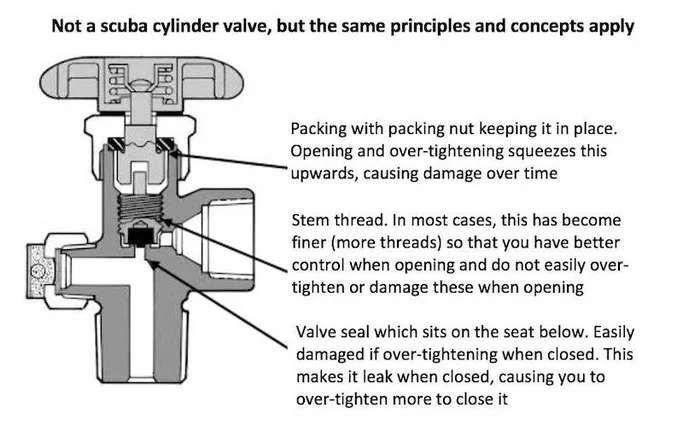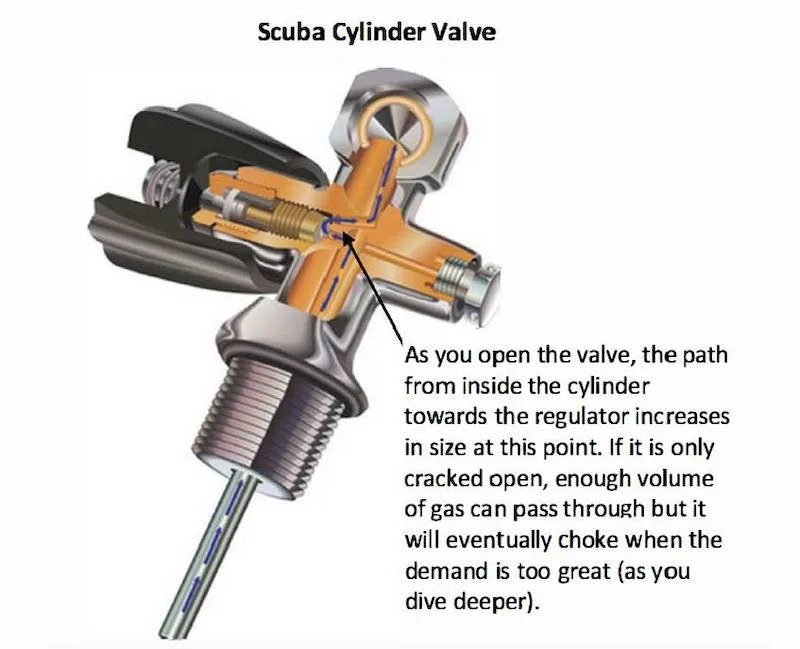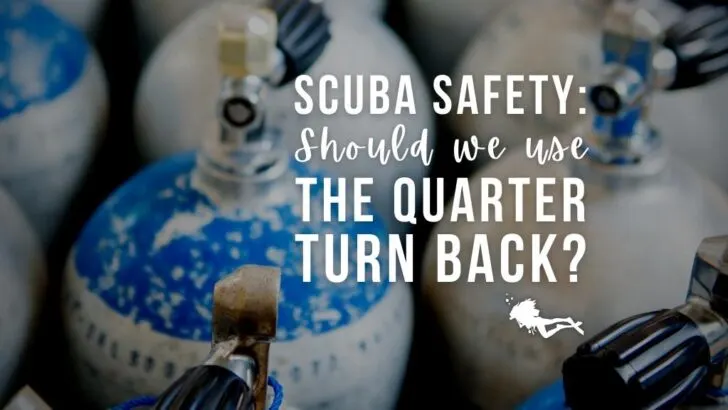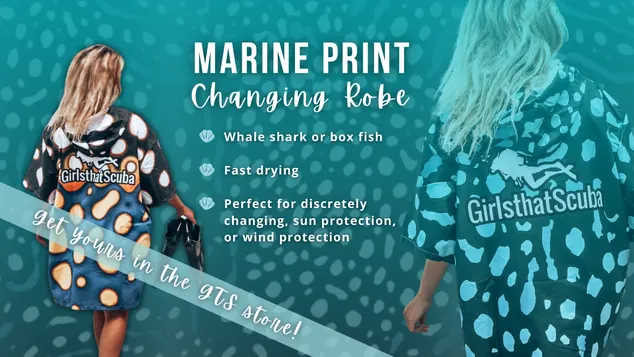Over on our Girls that Scuba Facebook group we ran a series called Safety Sunday, where our resident safety diver and GTS moderator Chloe Strauss created a post on a popular safety topic to explain more about it.
This particular topic about the quarter back turn gained a lot of attention and a lot of members thanking Chloe for the amazing information, so we wanted to share it further and hope you all learn something too!
Should we be using the quarter turn back on our scuba cylinders?
Most major training agencies do not recommend this quarter turn anymore and their Open Water (or equivalent) training materials suggest that you turn your cylinder all the way on. Why was this quarter turn suggested in the first place?
Years ago, valve designs were not as sophisticated as they are now, and damage was caused (over time) by opening them all the way. The rule of a quarter turn back was instituted to prevent this. Now, threads inside of scuba valves are more sophisticated and will no longer sustain the same kind of damage over time.
When fully opening a modern scuba valve it IS possible for them to get stuck, however in most cases this just means a little extra muscle needs to be involved in turning it off. However, a handwheel that is difficult to turn on and off means the valve needs to be serviced.

So, why is this quarter turn no longer recommended? Occasionally, if a fellow diver checks your air and finds it completely open, they might confuse it with being completely off and would actually turn the valve off and then a quarter turn open.
This could lead to a diver entering the water with a valve only partially open, which is potentially MORE dangerous than entering the water with a valve fully closed.
Why? It’s because divers have died due to this critical mistake.
What would happen if you used the quarter turn?
Imagine these two scenarios: you enter the water with your air off. You’d probably notice very quickly, most likely when you put the regulator in your mouth before descending.
Now imagine entering the water with your air only on a quarter turn. You might not notice because you’d be able to breathe normally… for a while. However, once you hit a certain depth you will not continue to receive air. Why does this happen? It has to do with Boyle’s law.
Boyle’s Law
Let’s say, for example, the amount of air required to fill my lungs at the surface is 8 liters per minute. At 33 feet my physical lung volume is the same, but I require double the air to fill them completely (16 l/m). The density of the air is greater and the opening inside my valve needs to be greater to accommodate this.

Therefore, a valve only opened a quarter turn (opening inside valve is smaller than it should be) would be fine at the surface, but may not be able to supply the necessary volume of air that I need to breathe adequately at depth.
Additionally, something called Sonic Velocity is involved. This is when the flow of a gas reaches the speed of sound, and can happen inside of the valve. When you turn the handwheel, you create an opening inside the valve that the air flows through.
If the valve isn’t fully open, the flow may become constricted which causes the velocity of the gas to increase, potentially reaching the speed of sound at which point it can “choke,” limiting the flow of air into your regulator, and therefore your lungs.
When the valve is fully open this will not happen. After one FULL turn of the hand wheel, the opening inside the valve will not increase in size – it is essentially “fully open” at this point.
How should we open our cylinders?
So, knowing all of this, what should we do in the future?
- Open and close your cylinder gently and completely. This is standard in tech diving.
- Be aware of people checking to make sure your air is on. They are well-meaning, but even experienced divers could make a mistake.
- Take a few deep breaths from your regulator while looking at your pressure gauge. The needle should hold steady instead of fluctuating. If it drops with each breath your valve is closed. If it bounces down and back up with each breath the valve is only partially open.





